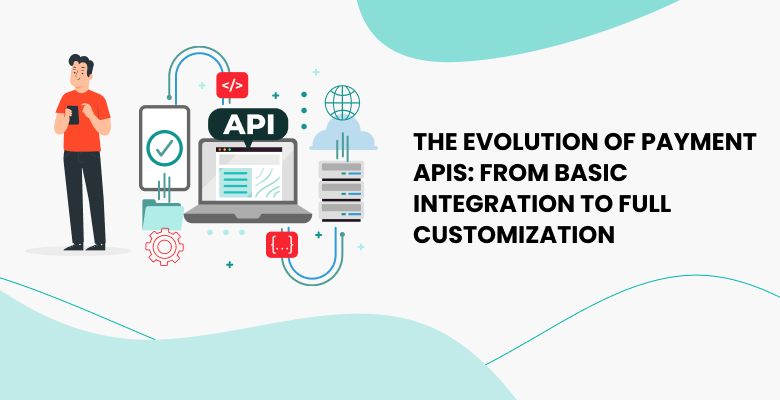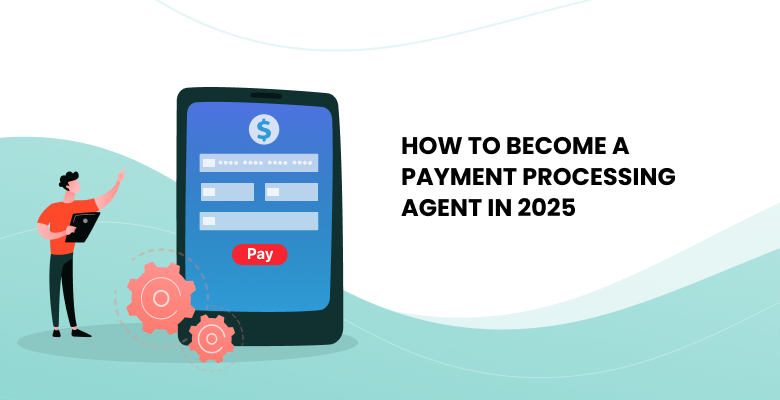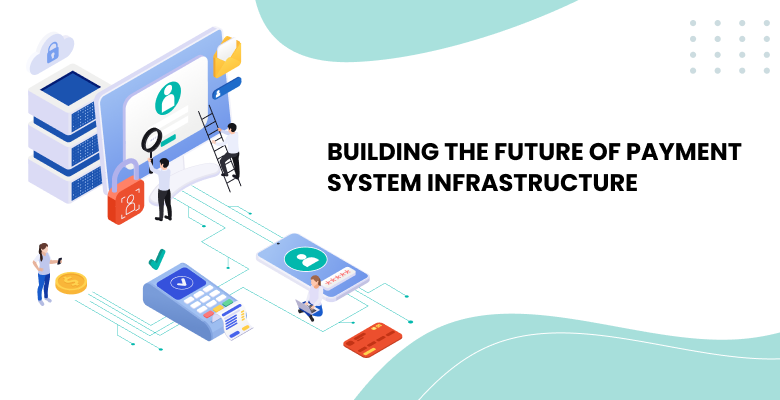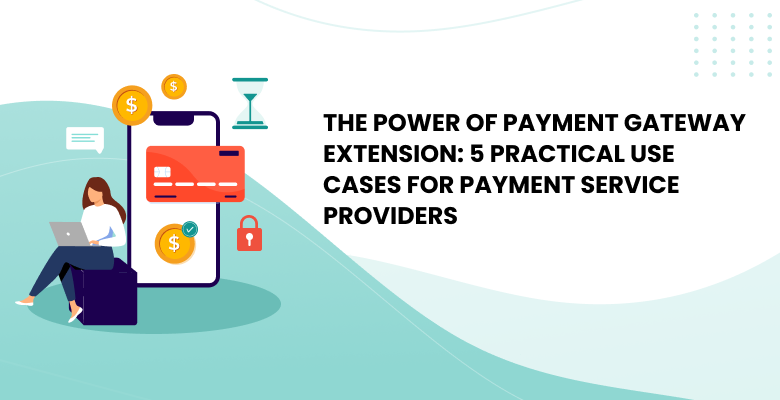
Did you know that integrating a single new payment method can still take up to four weeks of development and more than $20,000 in engineering hours at many SaaS companies? That slowdown directly impacts your bottom line and highlights why the integration of payment APIs must be faster and more reliable.
In practice, teams without fintech developer tools spend weeks updating SDKs, rewriting reconciliation logic, and hopping among gateway dashboards, which stalls backend-agnostic payment flows and hides real-time API performance. With low-code payment integrations, dynamic API documentation, and APIs for facilitating embedded payments, you streamline integration and focus on features instead of plumbing.
In this article, we’ll explore:
- What a payment API is and how it works, and how integration complexity has shifted from backend-heavy coding to API-based payment orchestration
- The security layers and compliance measures embedded in modern online payment APIs
- Customization capabilities that let you tweak checkout flows, routing rules, and fraud controls
- The benefits of a unified payment API versus siloed gateways
- Real-world examples of using payment APIs to launch top payment methods like credit cards, open banking, and even cryptocurrency.
A marketplace handling split payments between buyers and sellers can stall when rigid integrations block the use of payment APIs, forcing teams to maintain multiple SDK versions and write custom reconciliation scripts for each vendor.
A global eCommerce brand seeking to tap PIX rails or Europe’s open banking corridors often ends up juggling redirects, bespoke endpoints, and complex KYC flows. Add in token vaults, idempotency keys, and real-time webhooks for settlement and disputes, and you see why intelligent routing, fraud scoring engines, and multi-rail orchestration matter more than ever.
Today’s shoppers expect checkout to feel native: instant card tokenization, dynamic 3-D Secure challenges, and one-click wallets powered by embedded payment tools. That shift highlights the role of APIs as programmable gateways. Modern teams opt for API-first payment systems with built-in event streams, SDKs for mobile and web, and dashboard-driven payment workflow customization.
The use of payment APIs now underpins split billing, upsells, and local method rollouts in days rather than weeks, transforming each transaction into a growth catalyst. Far from being simple plumbing, payment APIs today are mission‑critical infrastructure for speed, security, and deep customization that has become the backbone of payments orchestration platform strategies.
The 3 Generations of Payment APIs
A payment API is a RESTful interface that lets your application initiate, authorize, and settle transactions without building each connection yourself. The role of APIs in payments is to handle authentication, routing to various acquirers, tokenization of card data, and status reporting.
Online payment APIs combine credit cards, digital wallets, bank transfers, and emerging rails under one integration, so you don’t need separate code for each method. By using payment APIs, developers can embed a full checkout flow in under 24 hours…an 80% reduction compared to traditional integrations that take up to five days.
The use of payment APIs cuts initial development time by 70%, slashes compliance audit preparation from three months to zero extra work, and delivers 100% transaction traceability, reducing error resolution from 48 hours down to just one.
Below is a timeline of how the evolution of payment APIs has reshaped merchant and developer experiences:
Generation 1: Basic Gateway APIs (2000s)
In the early 2000s, most gateways exposed a single endpoint for payment initiation. Merchants relied on redirect-based checkouts and static form posts—each gateway was a separate black box. If you wanted to support multiple payment methods, you needed separate integrations and different SDKs. This generation offered:
- Simple card processing via HTML forms or SOAP calls
- Rigid specifications requiring manual updates for new features
- Minimal UX control, with hosted pages handled by the gateway
- No customization, making it hard to optimize authorization rates or user flows
Generation 2: RESTful Multi-Method APIs (2010s)
RESTful APIs brought significant innovation to the way developers integrated payments. Gateways introduced JSON-based endpoints, tokenization for secure storage of card data, and support for alternative payment methods (APMs) like digital wallets and local bank debits.
Despite these advances, merchants still managed much of the transaction logic in their backend:
- Subscription billing and recurring payments via dedicated REST endpoints
- Token vaults to safely store card credentials and reduce PCI scope
- Broader coverage of payment methods, but still with backend-heavy workflows
- Polling or webhook handling necessary for asynchronous events.
While this generation simplified many tasks, challenges remained around reconciliation, dispute management, and scaling across global markets.
Generation 3: Modular & Customizable APIs (Today)
Today’s and future payment system infrastructure trends and API modular architecture empower businesses with agile, API-first payment orchestration.
A hallmark of Gen-3 payment platforms is that most flow changes require configuration rather than custom code. For example, an API-based orchestration layer lets you define routing rules – such as “send all European transactions above $500 to Acquirer A, others to Acquirer B” – via an admin panel or API call, without rewriting backend logic.
Webhooks mean your system can react to events (like a hold or a dispute) dynamically, and the platform handles retries and state for you.
A unified payment API lets you implement complex flows, like split payments, dynamic routing, or installment plans, through configuration rather than custom code:
- Developer-first SDKs for JavaScript, Python, Java, and more
- Smart routing that chooses the best acquirer in real time based on currency, location, or cost
- Microservice integration that connects fraud controls, analytics, and settlement in one platform
- Granular data access for advanced reporting and real-time reconciliation
- Built-in compliance for PCI DSS, PSD2, and open banking initiatives.
Creating a PSP used to require a $1 million investment, 18 months of development, four weeks per integration, and three months plus $50,000 a year for PCI compliance. Today’s payment APIs aren’t just payment connectors; they are control panels for scaling your payment experience.
“One client used our unified payment API to create PSP capabilities and add open banking and cryptocurrency rails alongside cards in under a month, cutting development time by 70 percent, reducing failures by 20 percent, and collapsing integration tasks from weeks to minutes,” said the Akurateco Solutions Team Leader.
Why Customization Matters in 2025 and Beyond
Five years ago, payment APIs were one-way pipes: your app sent a request and then kept polling for updates. Developers wrestled with rigid patterns and constant manual checks. Today, the use of payment APIs is truly two-way. Modern, event-driven systems send instant callbacks or WebSocket notifications as soon as status changes—no more waiting around.
An Australian Subscription Service’s BNPL Rollout
An Australian subscription service spent three weeks and over $30,000 in development costs trying to add a “buy-now-pay-later” option with legacy gateways. Sign-ups dropped by 15%, and support tickets spiked 40% as engineers wrestled with custom connectors and reconciliation scripts.
After choosing a payment API from a modern payments orchestration platform and pairing it with a white-label payment gateway, the same feature was launched in just three days (an 86% reduction in time-to-market.) This implementation demonstrated the true use of payment APIs for payment workflow customization, cutting support incidents by 50% and boosting conversion by 18%.
Organizations today expect:
- Custom UX flows: Let customers split payments, see relevant upsells, or renew with one click—all set up through API settings rather than custom code.
- Region-specific methods: Offer PIX in Brazil, M-PESA in Kenya, or UPI in India through a single integration so users never hit confusing redirects.
- API-first fraud rules: Set risk thresholds and automate chargeback steps with a few API calls, no server changes needed.
- Full tokenization & compliance: Vault card data off your servers and meet PCI DSS, PSD2, and privacy rules from day one.
If you’re serious about choosing a payment API that powers growth, explore a true payments orchestration platform and see how a flexible white-label payment gateway can transform your checkout experience.
The Risks of Staying with Outdated API Models
If you stick with legacy payment APIs, you’re paying a hidden toll every day.
- Lack of customization = poor checkout UX
Unbranded redirects and one-size-fits-all flows frustrate customers and lower conversion rates. - No modularity = every new method needs a full re-integration
Adding a single payment method can take weeks or months of engineering effort. - No transparency = hard to track errors or improve performance
Black-box gateways leave you guessing why transactions fail, slowing down optimization cycles.
“Companies tied to legacy gateways spend on average 20% of their engineering resources just maintaining payment integrations,” warns an industry analyst. “That’s money and time wasted on what should be a strategic asset.”
What is it costing your platform?
- Revenue leakage from abandoned carts
- Delayed market entry for new payment methods
- Increased support and compliance overhead.
What to Look for in a Payment API
The evolution of payment APIs has taught us that a “one-size-fits-all” gateway does not work anymore. When choosing a payment API, you’re not just picking a vendor, but you’re investing in the future of your checkout experience and the use of payment APIs as growth drivers. Here’s what to check:
Unified endpoints for cards, APMs, and wallets
A single API call handles credit and debit cards, digital wallets, bank debits, and cryptocurrency rails. Akurateco’s unified payment API supports over 500 methods through one integration, so adding or removing a payment option takes minutes rather than weeks.
Webhooks and asynchronous response handling
You need immediate notifications for authorizations, settlements, refunds, and disputes. Akurateco’s real-time webhooks push events directly to your back end, keeping your systems in sync without manual polling.
Real-time reporting and error logs
Dashboards and API endpoints surface every transaction metric and error code the moment they occur. Akurateco’s analytics portal and reporting API give you full visibility into payment flows, conversion rates, and decline reasons—so you can troubleshoot on the fly.
Native tokenization and PCI compliance
You shouldn’t store sensitive card details on your own servers. With Akurateco, tokenization is built in from the start, so card information never touches your infrastructure. This out-of-the-box approach keeps you compliant with PCI DSS and PSD2 while reducing your regulatory burden.
Sandbox environments for testing
Validate payment initiation and checkout flows safely before going live. Akurateco’s sandbox mirrors production settings, allowing your QA team to run every scenario without impacting real transactions.
Granular permissions and audit logs
Not every team member needs full access. Akurateco lets you assign role-based API keys and records every API call in detailed logs. Auditors and operations teams get the visibility they need, without exposing all your data.
Choosing a payment API
This decision goes far beyond transaction processing. It’s a strategic move that shapes your entire product roadmap and maximizes the use of payment APIs within your offering. A platform built on a modular, flexible payment solution architecture lets you pivot quickly by adding new features or payment methods on demand while delivering the seamless checkout workflows your customers expect.
Conclusion
Think of the integration of payment APIs as the accelerator for your business, not just plumbing under the hood. The evolution of payment APIs shows that backend-agnostic payment flows and true payment orchestration let you launch features faster, localize smarter, and stay compliant without extra engineering work. Thanks to APIs in facilitating embedded payments, your checkout lives right inside your app or site; when APIs work in embedded payments scenarios, users never see a screen flicker. As APIs function in embedded payments, they handle routing, fraud checks, and more behind the scenes.
By combining fintech developer tools like low-code payment integrations, dynamic API documentation, and real-time API performance monitoring, with Akurateco’s integration with Payomatix and other APMs, your team moves at the speed of product innovation. From empowering TESS to scale and comply in Qatar’s regulated market to helping Dinero Pay roll out Apple Pay, Google Pay, and BNPL options in Saudi Arabia, our platform proves how flexible integration of payment APIs drives growth. If you want to keep pace with your users and outmaneuver regulations, API flexibility is non-negotiable.
Let’s build a custom API experience that scales with your business!
FAQ
How is a modern payment API different from legacy gateways?
Modern payment APIs transform the integration of payment APIs into interactive, event-driven channels. Unlike legacy gateways that required constant polling, these APIs facilitate embedded payments by sending asynchronous callbacks and event notifications. They work in embedded payments contexts to deliver real-time API performance data and keep your systems perfectly in sync.
What level of customization can I expect from modern payment APIs?
When choosing a payment API today, you unlock truly backend-agnostic payment flows. You can split or route transactions, tweak fraud rules, and adjust checkout steps—all via configuration. Platforms offering low-code payment integrations let your product and dev teams launch new methods in days, not months.
How do Akurateco’s payment APIs support routing and orchestration without a separate tool?
Akurateco’s power of payment orchestration comes from its unified API layer and white-label payment gateway. Supported by fintech developer tools and detailed dynamic API documentation, this approach delivers smart routing, fraud controls, and analytics, all through one seamless integration.
Is it possible to change the payment flow logic dynamically via API?
Absolutely. With Akurateco’s modular design, you can update your flows on the fly by adding or removing methods, toggling features, and watching real-time performance metrics, as APIs function in embedded payments without new deployments.
What developer support features should I prioritize?
Look for robust fintech developer tools: comprehensive SDKs, sandbox environments, and dynamic API documentation. These resources clarify how APIs work in embedded payments, accelerate low-code payment integrations, and help your team troubleshoot quickly.






